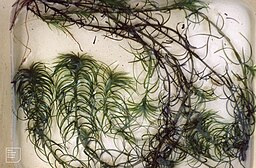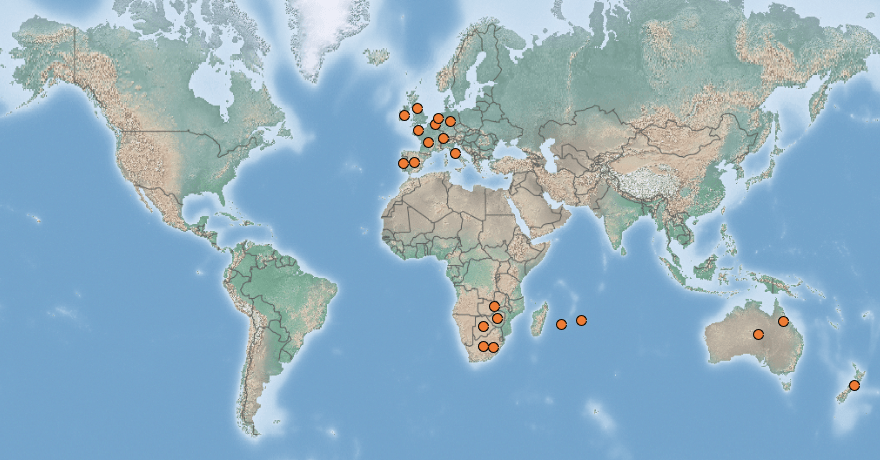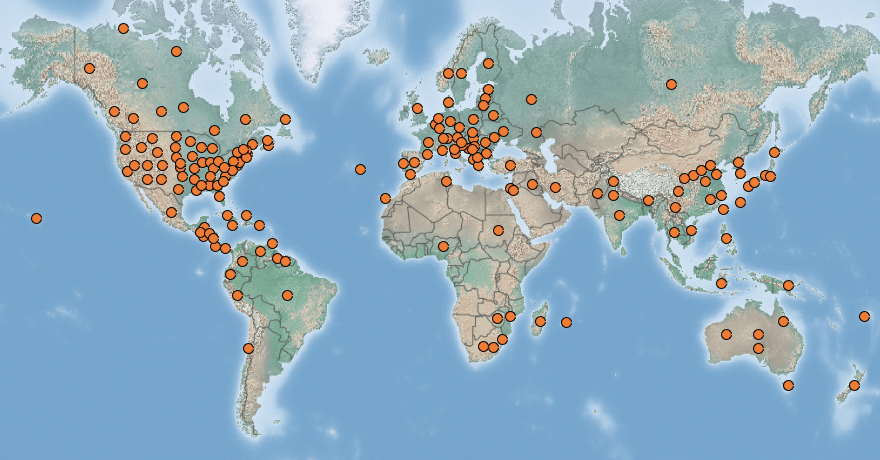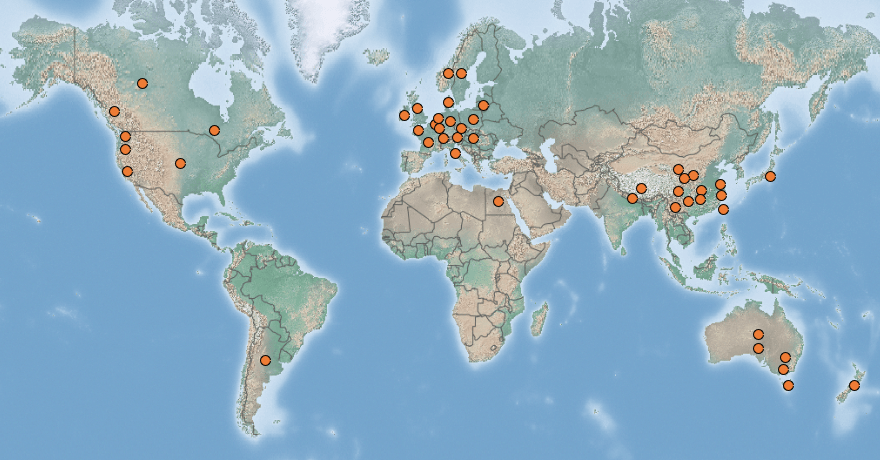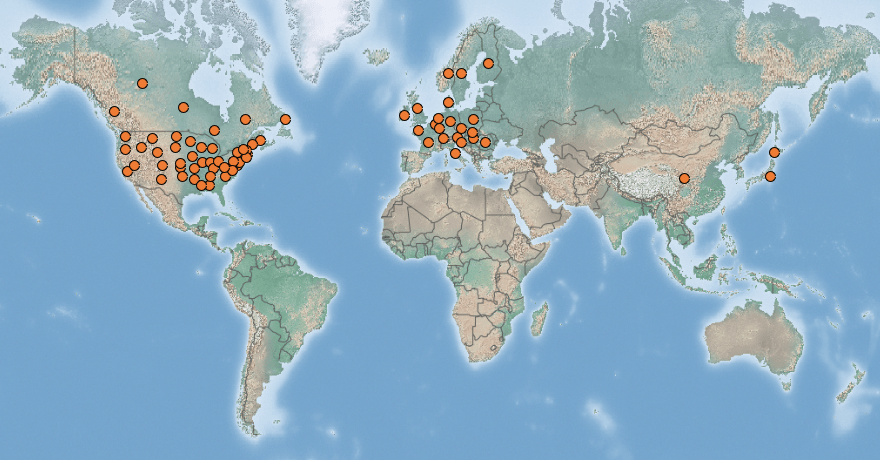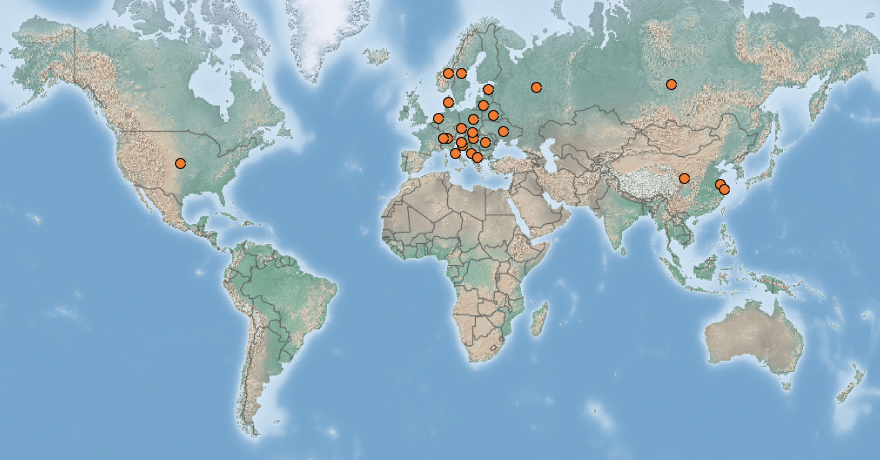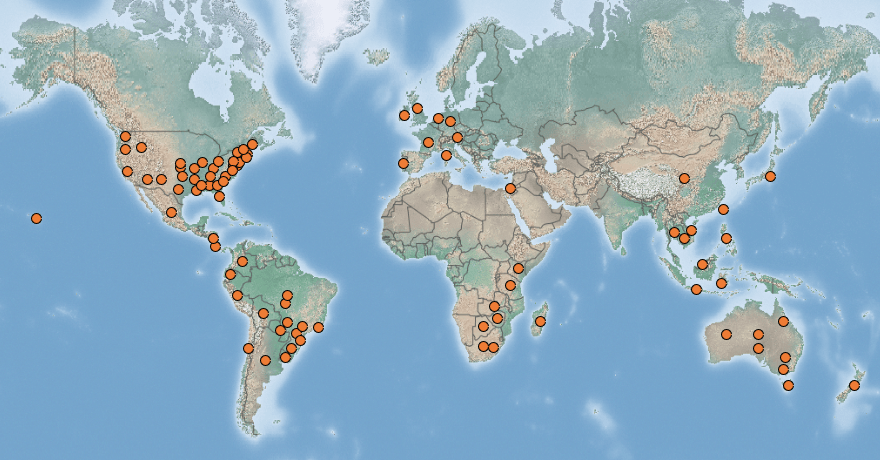 |
Narrow-leaved Michaelmas-daisy | Status LU: established. 1st record: LU 1934, ITW 1949. |
 |
Schmuelbliedreg Aster | Status Eur. : established. 1st record: UK 1633. |
 |
Aster à feuilles lancéolées | RA: ISEIA: C1. Harmonia+: 0,15 |
 |
Lanzettblättrige Aster | Wikipedia: |
 |
Smalle Aster | Back to the list of neophytes |
Contents
Brief description
Aster lanceolatus Willd. thrives both in ruderal and riparian areas, especially on rich and moist to humid soils. Commonly planted in gardens, it then gets propagated through fly-tipping of green waste. Seed development depends on climatic conditions. Asters are rhizomatous species, and can propagate clonally. They easily form dense and wide monospecific colonies, displacing native wetland plants, and favouring the sedimentation and stabilization of riverbanks, which reduces the ability of rivers to meander and flood (Branquart et al. 2010).
Status and distribution in Luxembourg
Records of Aster lanceolatus Willd. in Luxembourg. Data source: Recorder-Lux, iNaturalist & GBIF, 2025-12-04.
In Luxembourg, Aster lanceolatus Willd. was first collected by Jos Witry on 24th August 1934 in Grevenmacher (Specimen № 52294, MNHNL 2000-b). It is not specified if it was cultivated or not.
The species was first recorded in the wild by François Léon Lefort (1917-1975) on 30 September 1949 by the river Sûre in Diekirch (Specimen № 22445, MNHNL 2000-b).
Currently, 15 records of the species are accessible through the MNHNL-mdata portal, most of them in the Moselle valley (MNHNL, iNaturalist & GBIF 2019).
According to Lambinon & Verloove (2012: 706), the species occurs as quite common to quite rare (AC-AR) around villages, vacant lots, wastelands, and river banks, as subspontaneous or naturalised.
Other Aster taxa
- Aster dumosus L. (Syn.: Symphyotrichum dumosum (L.) G. L. Nesom): the bushy aster is first reported by Tinant on the banks of the Moselle (Wirtgen 1842: 89; Lefort 1950: 41). A hybrid Aster dumosus x novi-belgii was collected by Paul Grzonka and Léopold Reichling on 29 September 1959 in Bech-Kleinmacher in the Moselle valley (MNHNL 2000-b).
- Aster novi-belgii L.: confused Michaelmas-daisy, first mentioned in 1872 in the wild in Luxembourg.
- Aster ×salignus: this hybrid between A. lanceolatus x A. novi-belgii is much confused with both its parents, particularly A. lanceolatus. The common michaelmas daisy was first mentioned by Yves Krippel in 2001 at Pällembierg (MNHNL 2000-b).
Risk assessment
ISEIA protocol
C1 (2+2+2+1) (Ries et al. 2013: 18).
Harmonia+ protocol
Overall risk score 0,15 = (Overall Invasion score 0,36 x Overall Impact score 0,40) (Ries et al. 2020).
 Invasion
Invasion0,40

 Impact
Impact0,15

 Risk
RiskWorldwide distribution
Bibliography
- Branquart, E., S. Vanderhoeven, W. Van Landuyt, F. Van Rossum & F. Verloove, 2010. Harmonia database: Aster lanceolatus Willd. Harmonia version 1.2, Belgian Forum on Invasive Species. URL: http://ias.biodiversity.be [accessed on 2019-10-16]
- CABI, 2020. Aster lanceolatus. In: Invasive Species Compendium. Wallingford, UK: CAB International. URL: www.cabi.org/isc [accessed 2020-02-28]
- Lambinon J. & F. Verloove, 2012. Nouvelle flore de la Belgique, du grand-duché de Luxembourg, du Nord de la France et des régions voisines. Sixième édition. Avec la collaboration de L. Delvosalle, B. Toussaint, D. Geerinck, I. Hoste, F. Van Rossum, B. Cornier, R. Schumacker, A. Vanderpoorten et H. Vannerom. Jardin botanique national de Belgique, Meise. CXXXIX + 1195 pp. ISBN : 9789072619884.
- Lefort, F. L., 1950. Contribution à l’histoire botanique du Luxembourg (av. 18 planches). Bull. Soc. Nat. luxemb. 54: 31-160. [PDF 6781 KB]
- MNHNL, 2000-a. Aster novi-belgii L. in Recorder-Lux, database on the natural heritage of the Grand Duchy of Luxembourg. Musée national d’histoire naturelle, Luxembourg. URL: https://mdata.mnhn.lu [Accessed 2019-09-03]
- MNHNL, 2000-b. Recorder-Lux, database on the natural heritage of the Grand Duchy of Luxembourg. Musée national d’histoire naturelle, Luxembourg. URL: https://mdata.mnhn.lu [Accessed 2019-10-24]
- MNHNL, iNaturalist & GBIF, 2019. Aster lanceolatus Willd. in MNHNL-mdata, online portal combining species observation from Recorder-Lux, iNaturalist and GBIF. National Museum of Natural History, Luxembourg. URL: https://mdata.mnhn.lu [Accessed 2019-09-06]
- Ries, C. & Y. Krippel, 2021. First records of 56 invasive alien vascular plants in Luxembourg. Bulletin de la Société des naturalistes luxembourgeois 123: 115-127. [PDF 241 KB]
- Ries, C., Y. Krippel & M. Pfeiffenschneider, 2020. Risk assessment after the Harmonia+ protocol of invasive alien vascular plant species in Luxembourg. Bull. Soc. Nat. luxemb. 122: 197-205. [PDF 132 KB]
- Ries, C., Y. Krippel, M. Pfeiffenschneider & S. Schneider, 2013. Environmental impact assessment and black, watch and alert list classification after the ISEIA Protocol of non-native vascular plant species in Luxembourg. Bull. Soc. Nat. luxemb. 114: 15-21. [PDF 652 KB]
- Schmidt, G., 1993. Fiches de terrain, cartographie des biotopes de la commune de Remerschen. Fondation Oeko-Fonds, Luxembourg. Non published document.
- Wirtgen, P., 1842. Prodromus der Flora der preussischen Rheinlande. Henry & Cohen, Bonn. 242 p.
Page content last updated on 2021-03-02. Last proofread by Caroline Grounds on 2019-11-13.










